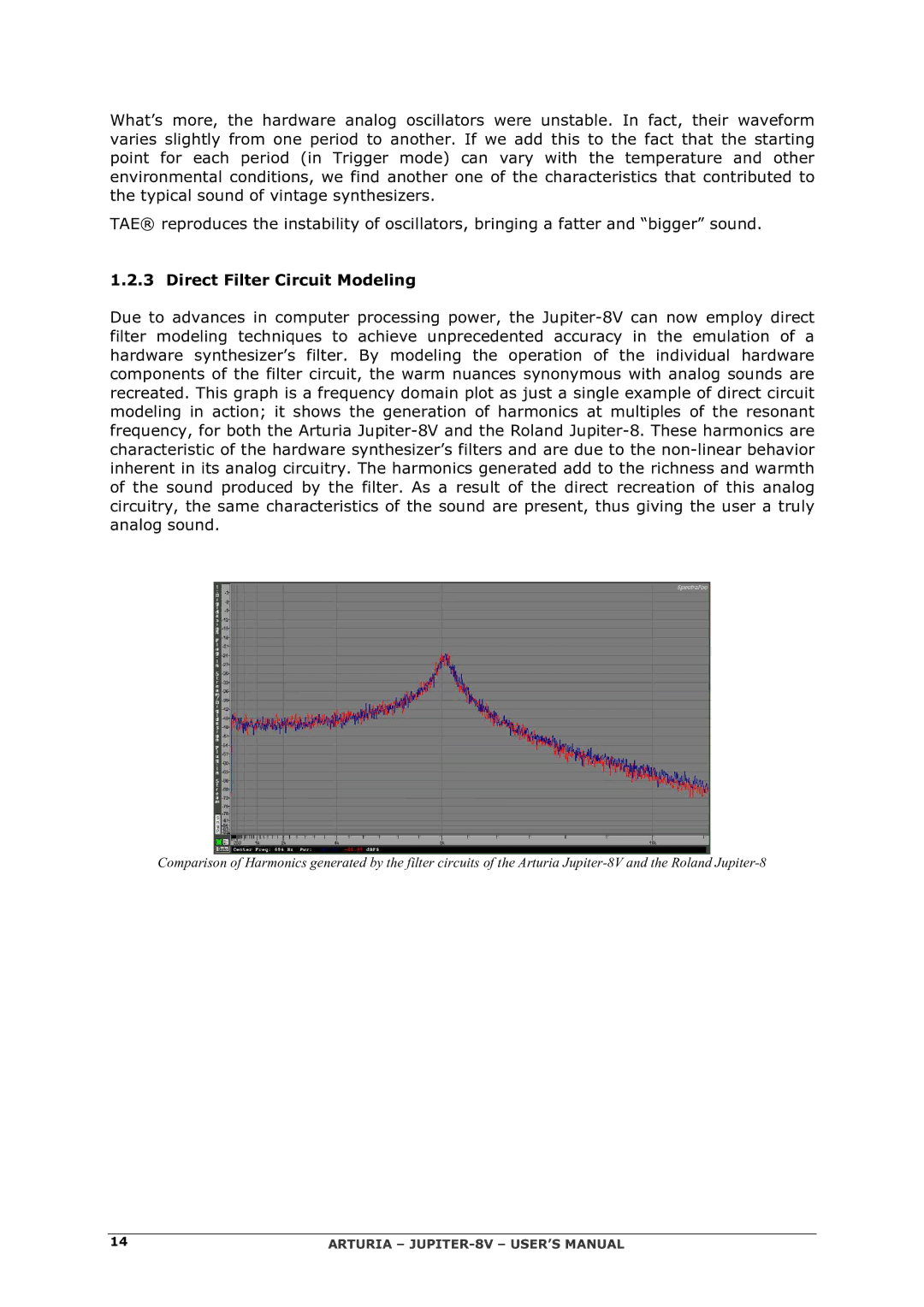
What’s more, the hardware analog oscillators were unstable. In fact, their waveform varies slightly from one period to another. If we add this to the fact that the starting point for each period (in Trigger mode) can vary with the temperature and other environmental conditions, we find another one of the characteristics that contributed to the typical sound of vintage synthesizers.
TAE® reproduces the instability of oscillators, bringing a fatter and “bigger” sound.
1.2.3 Direct Filter Circuit Modeling
Due to advances in computer processing power, the Jupiter-8V can now employ direct filter modeling techniques to achieve unprecedented accuracy in the emulation of a hardware synthesizer’s filter. By modeling the operation of the individual hardware components of the filter circuit, the warm nuances synonymous with analog sounds are recreated. This graph is a frequency domain plot as just a single example of direct circuit modeling in action; it shows the generation of harmonics at multiples of the resonant frequency, for both the Arturia Jupiter-8V and the Roland Jupiter-8. These harmonics are characteristic of the hardware synthesizer’s filters and are due to the non-linear behavior inherent in its analog circuitry. The harmonics generated add to the richness and warmth of the sound produced by the filter. As a result of the direct recreation of this analog circuitry, the same characteristics of the sound are present, thus giving the user a truly analog sound.
Comparison of Harmonics generated by the filter circuits of the Arturia Jupiter-8V and the Roland Jupiter-8
14 | ARTURIA – JUPITER-8V – USER’S MANUAL |

